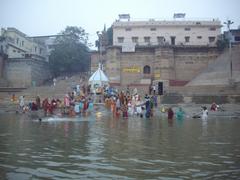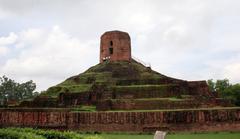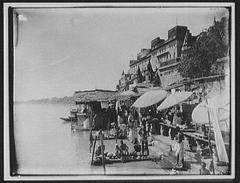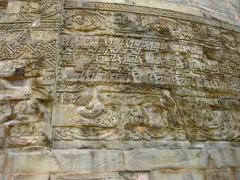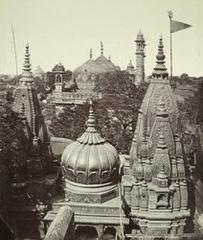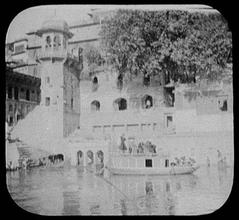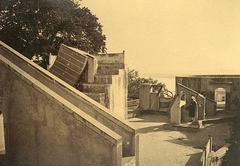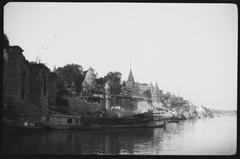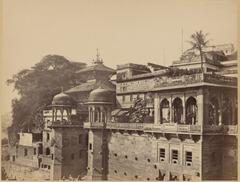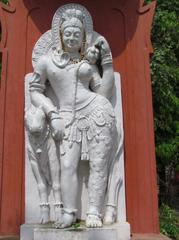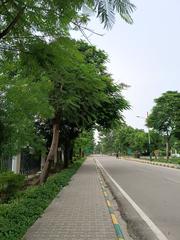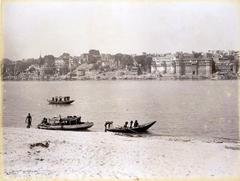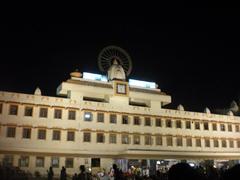
Shivala Ghat Varanasi: Visiting Hours, Tickets, and Historical Significance
Date: 14/06/2025
Introduction
Shivala Ghat is one of Varanasi’s most serene and historically rich riverfronts, nestled along the sacred Ganges. Renowned for its tranquil ambiance and deep cultural roots, this ghat offers a unique vantage point to experience the spiritual pulse, architectural heritage, and vibrant local life of Varanasi. Its origins, dating to the late 18th century, are intertwined with royal patronage and pan-Indian religious traditions, making it a compelling destination for pilgrims, history enthusiasts, and travelers seeking an authentic connection to the city’s living heritage (Wikiversity, TravelTriangle, Holidify).
Table of Contents
- Historical Background
- Cultural and Religious Significance
- Architectural Features and Heritage Sites
- Visiting Shivala Ghat: Practical Information
- Conservation and Present-Day Status
- Frequently Asked Questions (FAQ)
- Conclusion
- Call to Action
- References
Historical Background
Origins and Royal Patronage
Shivala Ghat was established in 1767 by King Balwant Singh, a prominent ruler of the Benares princely state, who constructed a stone-built ghat to serve the city’s ritual and social needs (Wikiversity). The ghat’s name is derived from the Shiva temple that anchors its spiritual identity. In the following decades, Chet Singh extended the ghat and constructed his palace nearby, fostering further development and attracting South Indian Hindu migrants, who established monasteries and ashrams in the Shivala colony (Optima Travels). In the late 19th century, King Sanjay Vikram Shah of Nepal built a grand palace and Shiva temple here, marking the area as a cosmopolitan religious hub (Wikipedia).
Modern Developments
Following the colonial period, the ghat’s management shifted from royal hands to a combination of temple trusts, private owners, and municipal authorities. In 1988, the Uttar Pradesh government undertook significant restoration to preserve accessibility and historical character (Wikiversity). The area above the ghat remains a vibrant neighborhood, its South Indian community still maintaining religious and cultural traditions.
Cultural and Religious Significance
Shivala Ghat has played a vital role in the religious and cultural tapestry of Varanasi. It has served as a center for the Bhakti movement, a gathering place for saints, poets, and scholars, and a venue for festivals such as the now-rare Budhva Mangal, which once featured musical processions and boat parades. The ghat’s steps witness daily rituals—ablutions, prayers, tarpan (ancestral offerings), and devotional singing—making it a living archive of Hindu traditions (TravelTriangle).
The presence of the Brahmendra Math monastery, catering to South Indian pilgrims, and shrines dedicated to deities like Hayagriva Keshava and Hanuman, highlight Shivala Ghat’s inclusivity and pan-Indian religious appeal (Path Is My Goal).
Architectural Features and Heritage Sites
Shivala Ghat is distinguished by:
- Broad Stone Steps: Characteristic of Varanasi’s ghats, these steps descend gracefully to the Ganges and are ideal for rituals and relaxation.
- Shiva Temple: The ghat’s spiritual core, attracting daily worshippers and festival crowds (Visit Kashi).
- Brahmendra Math: A monastery serving South Indian pilgrims, fostering learning and religious discourse.
- Nepalese Palace: Built by King Sanjay Vikram Shah, this 19th-century structure is a testament to cross-cultural ties and architectural grandeur.
- Other Shrines: Devoted to various deities, reflecting the ghat’s religious diversity.
Nearby, the Chet Singh Fortress and the King of Nepal’s mansion add further layers of historical intrigue (Holidify).
Visiting Shivala Ghat: Practical Information
Visiting Hours
Shivala Ghat is open 24 hours a day, enabling visitors to experience the peacefulness of sunrise and the serenity of sunset.
Tickets and Entry
- Entry Fee: Free for all visitors.
- Special Sites: Some temples or heritage buildings may request a nominal donation or have ticketed events—check locally for details.
Accessibility
- The ghat’s broad stone steps can be challenging for those with mobility issues.
- Approach routes involve narrow lanes; comfortable footwear is recommended.
Travel Tips
- Best Times: Early mornings for rituals and photography; evenings for sunset views.
- Boat Rides: Available from the ghat; negotiate prices in advance (₹200–₹600 per person as of 2024).
- Nearby Attractions: Chet Singh Ghat, Dashashwamedh Ghat, Assi Ghat, and Kashi Vishwanath Temple are easily accessible.
- Accommodation: Options range from budget guesthouses (from ₹1,300/night) to luxury hotels (up to ₹12,999/night), many with river views.
- Food: Enjoy local snacks and vegetarian cuisine from stalls in the surrounding lanes (Holidify).
Special Events and Tours
- Guided Tours: Local operators offer heritage walks and boat tours featuring Shivala Ghat.
- Festivals: Maha Shivaratri and Dev Deepawali transform the ghat with lights, music, and rituals.
Photographic Spots
- The ghat’s steps, temples, Nepalese palace, and sunrise/sunset vistas are favored by photographers.
Conservation and Present-Day Status
While Shivala Ghat does not benefit from a unified conservation plan, its temples and monasteries are maintained by dedicated trusts. The municipal corporation oversees public areas, with active community efforts supporting cleanliness and environmental preservation (Wikiversity).
Frequently Asked Questions (FAQ)
Q: What are the visiting hours for Shivala Ghat?
A: Open 24 hours; early morning and evening are ideal.
Q: Is there an entry fee or ticket required?
A: No entry fee; special sites may have separate charges.
Q: Are guided tours available?
A: Yes, both walking and boat tours can be booked locally.
Q: Is Shivala Ghat wheelchair accessible?
A: Accessibility is limited due to steps and narrow lanes.
Q: What are the best times to visit?
A: Sunrise and sunset provide serene experiences and beautiful views.
Q: Is photography allowed?
A: Yes, but always seek permission before photographing individuals or rituals; cremation photography is strictly prohibited.
Conclusion
Shivala Ghat stands as a tranquil and culturally significant landmark on the Ganges, offering a harmonious blend of royal history, spiritual devotion, and authentic local life. Free and open around the clock, it is a must-visit for those seeking a contemplative experience amidst Varanasi’s storied ghats. Whether you are drawn by morning rituals, spectacular festivals, heritage architecture, or simply the peaceful rhythm of the river, Shivala Ghat welcomes you to discover the soul of Varanasi.
Call to Action
Plan your visit to Shivala Ghat today! Download the Audiala app for detailed travel guides, real-time updates, and booking options for tours and accommodation. Follow us on social media for insider tips, festival news, and inspiring stories from India’s spiritual capital.
References
- Wikiversity: Shivala Ghat Varanasi
- TravelTriangle: Shivala Ghat Guide
- Holidify: Shivala Ghat Sightseeing
- Optima Travels: Shivala Ghat
- Wikipedia: Shivala Ghat
- Path Is My Goal: Important Ghats in Varanasi
- Visit Kashi: Shivala Ghat
- Hippie in Heels: Varanasi Travel Tips
- Varanasi Tourism Official
- TravelSetu: Shivala Ghat Tourism & History
- BanarasTrip
